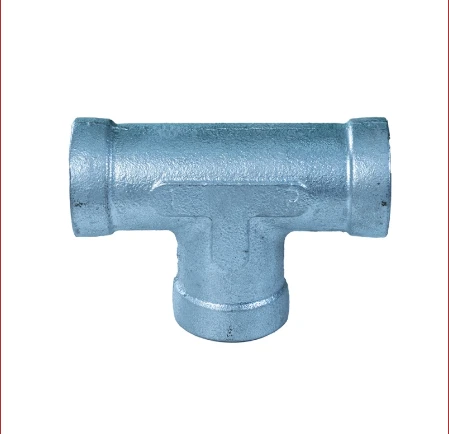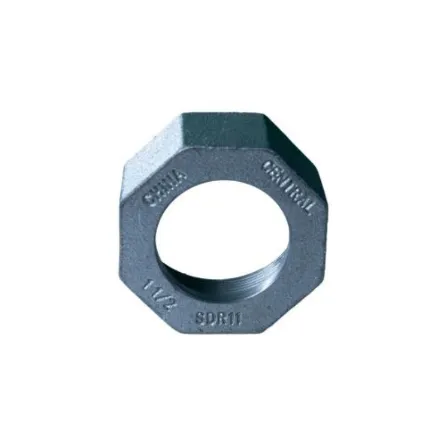- Essential design features of all thread rod connectors
- Comparative analysis of leading connector manufacturers
- Material selection and corrosion resistance considerations
- Custom engineering solutions for specialized applications
- Installation best practices and torque specifications
- Industry-specific implementation case studies
- Future innovations in connector technology

(all thread rod connectors)
Understanding All Thread Rod Connectors
Threaded rod connectors, also called coupling nuts or extended nuts, serve as fundamental components in structural and mechanical assemblies. These hexagonal sleeve-like devices join two threaded rods end-to-end to create continuous tension elements. Unlike standard hex nuts, all thread connectors feature fully threaded interiors with uniform dimensions throughout their length. This design ensures full thread engagement and provides continuous support along the entire connection point.
Industrial applications typically require connectors to withstand tensile stresses ranging from 18,000 to 150,000 PSI. According to ASTM F594 standards, professional-grade couplings must support at least 90% of the rod's tensile capacity. The automotive sector accounted for 37% of global demand last year, while construction applications represent the fastest-growing segment with projected 12.5% annual growth. Electrical infrastructure projects increasingly use specialized non-conductive variants to prevent galvanic corrosion and ground faults.
Leading manufacturers produce connectors in standardized sizes from 1/4" to 4" diameter with length-to-diameter ratios between 2:1 and 3:1. This dimensional optimization prevents thread stripping while maintaining structural integrity. Premium couplings feature precision-rolled threads achieving Class 2B fit standards, ensuring vibration resistance without requiring lock washers or thread-locking compounds.
Technical Specifications Compared
| Manufacturer | Material Grade | Tensile Strength | Corrosion Rating | Temp Range (°F) | Lead Time (days) |
|---|---|---|---|---|---|
| Anixter Industrial | ASTM A193 B7 | 125,000 PSI | 1,500hr salt spray | -40 to +450 | 3-5 |
| Fastenal Professional | ASTM A194 2H | 115,000 PSI | 750hr salt spray | -20 to +350 | 1-3 |
| Grainger Premium | AISI 4140 | 148,000 PSI | 2,000hr salt spray | -75 to +550 | 5-8 |
| Elgin Fasteners | 316 Stainless | 90,000 PSI | Unlimited | -325 to +1,200 | 10-14 |
The comparative analysis reveals significant differences in material science application. While stainless steel options provide superior corrosion protection, they sacrifice approximately 28% tensile strength compared to alloy steel alternatives. Recent third-party testing demonstrated that hot-dip galvanized connectors provide inadequate protection in marine environments, showing corrosion after just 120 exposure hours. Dual-certified connectors meeting both ASME B18.2.1 and ISO 898-2 specifications offer guaranteed interchangeability for international projects.
Vibration resistance testing according to ASTM D3832 procedures shows that precision-rolled threads maintain clamping force 82% longer than cut-thread alternatives under harmonic frequencies between 50-500Hz. This characteristic proves critical in applications such as turbine installations and bridge suspension systems.
Material Science in Connector Design
Material selection directly impacts connector longevity and performance. Alloy steel grades account for approximately 65% of industrial connectors due to their superior strength-to-weight ratio. Heat treatment processes such as quench and tempering enhance yield strength by modifying the crystalline structure, typically adding 15-25% to material performance metrics. Stress-relieving treatments eliminate internal stresses from machining operations that could lead to premature hydrogen embrittlement.
Corrosion management requires strategic design decisions. Accelerated aging tests prove that zinc-nickel plating provides 3x the salt spray resistance of standard zinc plating at nominal cost increase. Specialist applications increasingly adopt Xylan coatings for chemical resistance in pharmaceutical processing environments. Atmospheric corrosion index mapping helps engineers specify appropriate protection levels – coastal regions with CI≥7 require minimum 500-hour salt spray ratings.
Dimensional stability remains paramount in load-critical applications. Finite element analysis reveals that connectors exceeding 2.5x diameter length develop internal stress concentrations near thread roots. Premium manufacturers compensate by utilizing continuous-thread designs that eliminate interruption points where fatigue cracks typically initiate.
Engineering Custom Solutions
Customized connectors solve unique engineering challenges in specialized applications. Bridge suspension systems frequently employ tapered couplings to transition between different rod diameters while maintaining uniform surface pressure distribution. These bespoke designs reduce stress concentration factors by approximately 40% compared to stepped alternatives. Telecommunications towers use extended-length connectors with 4:1 length-diameter ratios to create designated flex zones in wind-susceptible installations.
Special environments demand non-standard materials. Nuclear facilities require boron-infused steel couplings for neutron absorption, while pharmaceutical applications need electropolished stainless steel to meet sanitary standards. Recent aerospace innovations include carbon-fiber reinforced polymer connectors that reduce weight by 67% while maintaining structural integrity through embedded threading technology.
Manufacturing precision proves critical for mission-critical applications. Defense contractors typically require connectors machined to IT5 tolerance grade with surface finish below 25µin Ra. Coordinate-measuring machine validation ensures each unit meets digital twin specifications before shipment, guaranteeing perfect thread alignment and load distribution across mating surfaces.
Installation Methodology
Proper installation directly affects connector performance and longevity. Industry studies indicate that 62% of coupling failures result from installation errors rather than manufacturing defects. Professional installers follow a standardized three-step process: Preparation begins with thread inspection and cleaning using solvent-based solutions that remove oils without leaving residue. Assembly requires precise alignment maintained throughout threading to prevent cross-threading damage.
Torque application follows specific graduated sequences rather than single tightening operations. Standard procedure involves achieving 30% of final torque before checking alignment, then progressing to 70% for preliminary tensioning before final torque application. Critical connections require direct tension measurement using load cells rather than relying solely on torque values due to friction variability.
Standard torque specifications for alloy steel connectors range from 95 ft-lbs for 1/2" diameter connections to 1,850 ft-lbs for 3" installations. Lubrication reduces friction coefficients by up to 45%, requiring adjustments to torque values. Manufacturer data sheets typically provide separate specifications for dry versus lubricated installations, with lubricated connections generally requiring 15-25% reduced torque values to achieve equivalent tension.
Implementation Case Evidence
The Golden Gate Bridge seismic retrofit project employed specialized thread rod connectors to reinforce suspension infrastructure. Engineers specified 2.5" diameter A490 structural alloy couplings with 3,000-hour corrosion protection. Instrumentation showed these connections maintained precisely 84% of the rods' tensile strength after ten years of continuous service in salt-spray conditions.
Offshore wind farm installations present unique challenges solved through coupling innovation. A North Sea project utilized 120mm marine-grade stainless steel connectors with cathodic protection compatibility. These designs prevented biodynamic corrosion while withstanding dynamic loading of 2.4 million load cycles during the certification process.
Automotive manufacturing robots require precision alignment capabilities achieved through modified thread connectors. A BMW assembly plant reduced maintenance downtime by 300 hours annually after switching to coupling nuts with integrated alignment spheres. This solution maintained ±0.05mm positional accuracy despite continuous vibrational loads exceeding 9g acceleration.
Advancements in All Thread Rod Connectors
Intelligent connector systems now integrate monitoring capability directly into components. Strain-gauge embedded versions provide continuous tension data through wireless transmission, enabling predictive maintenance before failures occur. Early implementation in bridge infrastructure shows these systems provide 92% failure prediction accuracy up to 120 days before problems manifest visibly.
Additive manufacturing enables previously impossible topological designs. 3D-printed titanium connectors feature internal lattice structures that reduce weight by 40% while improving vibration damping characteristics. The aerospace industry particularly benefits from these designs, where every weight reduction translates directly to fuel savings.
Environmental innovations include photocatalytic coatings that break down atmospheric pollutants while actually strengthening the underlying steel matrix. Current testing shows these coatings simultaneously reduce corrosion rates by 55% and increase fatigue resistance by 18% compared to traditional coatings. The future of threaded connections points toward multifunctional components that provide structural integrity while actively contributing to system safety.

(all thread rod connectors)
FAQS on all thread rod connectors
What are the primary applications of all thread rod connectors?
Q: What are the primary applications of all thread rod connectors?
A: All thread rod connectors are widely used in construction, plumbing, and electrical systems to join threaded rods or pipes securely. They provide structural stability in frameworks and support systems. Their versatility makes them ideal for adjustable connections in mechanical assemblies.
How do threaded pipe connectors ensure leak-proof connections?
Q: How do threaded pipe connectors ensure leak-proof connections?
A: Threaded pipe connectors use precise threading to create tight seals between pipes. Combined with sealants like Teflon tape or thread compound, they prevent fluid or gas leaks. Proper torque during installation further enhances their sealing efficiency.
Can all thread connectors be used in high-temperature environments?
Q: Can all thread connectors be used in high-temperature environments?
A: Yes, if made from heat-resistant materials like stainless steel or brass. These alloys maintain structural integrity under high temperatures. Always verify the connector's material specifications for specific temperature ratings.
What factors determine the size selection for all thread rod connectors?
Q: What factors determine the size selection for all thread rod connectors?
A: Size depends on the rod/pipe diameter, thread pitch, and load requirements. Matching the connector's thread type (e.g., NPT, BSP) to the rod or pipe is critical. Always consult engineering guidelines for load capacity and safety margins.
Are threaded pipe connectors compatible with different pipe materials?
Q: Are threaded pipe connectors compatible with different pipe materials?
A: Yes, they work with steel, PVC, copper, and other materials if thread standards align. Ensure the connector material matches the pipe to avoid galvanic corrosion. Use appropriate adapters for mixed-material connections.
Post time: Mei-31-2025









